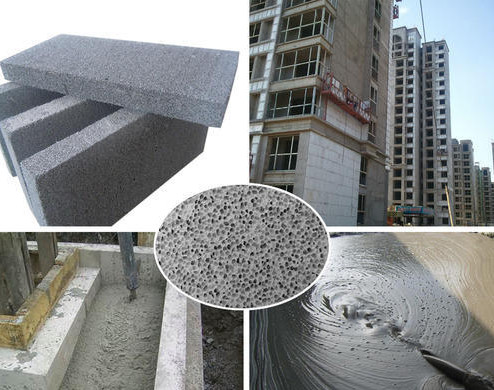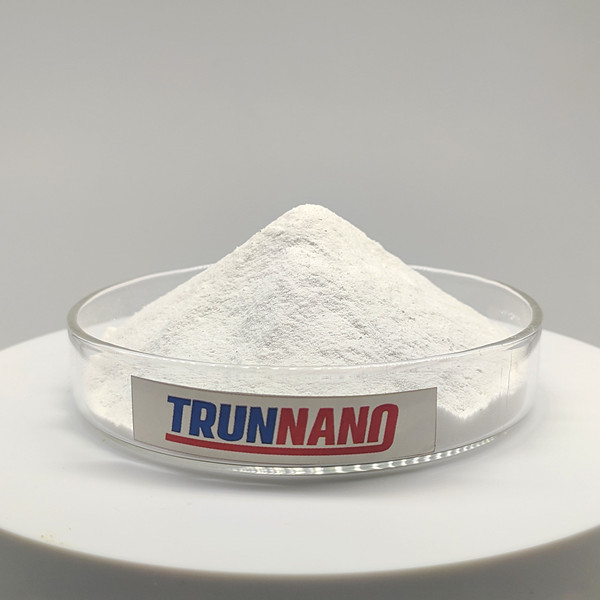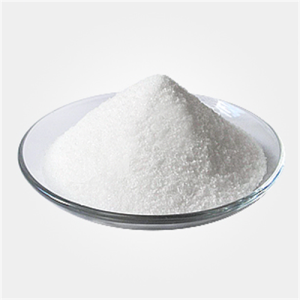Professional solutions on concrete addtives, Concrete Foaming Agent, Superplasticizer, CLC Blocks Additives, and foaming machine
(Study of the stabilized foam properties)
What is Foam stabilizer
The studies of samples obtained based on the foam stabilized with SiO2 sol in production conditions also showed that introducing NaCl additives did not destroy the foam. The compressive strength of foam concrete products increases up to 38%, and the coefficient of thermal conductivity decreases and corresponds to the foam concrete, the class of which is one rank lower by the average density. At the same time, the duration of the cutting strength attainment reduces by 7 hours, which significantly speeds up the technological process. The results obtained by our group were tested in industrial conditions under the technical specifications for producing foam concrete by cutting technology. In this technology, the cutting process begins when a foam concrete mass develops a specific cutting strength. The time of cutting strength attainment can be 17–20 hours, depending on the composition of the foam concrete. Reducing the time of this technological stage is essential from an economic point of view; besides that, it can improve the enterprise's productivity.
The methods of stabilization of construction foam on a protein basis for foam concrete
As the literature review shows, there needs to be knowledge concerning the methods of stabilization of construction foam on a protein basis for foam concrete at the expense of the introduction of sols of different natures into its composition. Also, the problems of improving the physical, mechanical, and thermal properties of the foam concrete of non-autoclaved hardening obtained based on such foam should be considered. The main idea of the work is that it is possible to use SiO2 and Fe(OH)3 sols as stabilizers for protein foaming agents (PFA), as it is possible to form various chemical bonds between them, for example, hydrogenous, in the case of using SiO2 sol, or covalent, in the case of using Fe(OH)3 sol. These bonds should contribute to forming strong spatial silicon- and iron-protein complexes, which will increase the thickness of the foam film and prevent its destruction. This effect should preserve the volume of foam when it is introduced into the cement-sand mixture, as well as improve the physical, mechanical, and thermal characteristics of foam concrete and its products. The foam stabilization effect can be significant for producing heat-insulating foam concrete of low density (class of average density ≤ D200), as it will prevent volume instability of raw foam concrete mixture. Also, this effect will make it possible to use hardening accelerators—electrolytes—in the composition of foam concrete, which usually destroy it. In high-rise construction, when the foam concrete mixture is fed vertically to a great height, foam stabilization will prevent its destruction under the influence of its pressure in the falling pipeline. It is known that when getting foam concrete products by cutting technology, there appear problems with cutting the mass of foam concrete—there arise chips and other geometric defects. They reduced the quality category of foam concrete products to category II. To obtain the first quality category is essential because carrying out brickwork allows placing the foam concrete blocks on the construction glue (coefficient of thermal conductivity, λ ≈ 0.3 W/(m∙°C)) and not on the cement mortar λ ≈ 0.3 W/(m∙°C)). The use of construction glue is proven to increase the thermal insulating properties of masonry walls significantly. It is assumed that the stabilized foam and the hardening accelerator will considerably increase the number of products in the first quality category.
Study of the stabilized foam properties
To confirm the stabilizing effect of SiO2 and Fe(OH)3 sols, the stability of the construction foam was investigated depending on the concentration of the dispersed phase of the sols in the solution of the protein foaming agent. In the study, a protein foaming agent, "Foamcem," was used as a foaming agent, based on which a 3% aqueous solution was prepared. In addition, SiO2 sol of the industrial production "SITEC" was used. Its characteristics are shown in Table 2. Also, Fe(OH)3 sol obtained in the laboratory was used. Fe(OH)3 sol was accepted by the following method: 5 ml of a 10% solution of iron chloride FeCl3 was slowly poured into boiling water with a volume of 100 ml. The stability of the foam was evaluated as the time of extraction (in minutes) of half of the liquid phase from which the foam was prepared. The coefficient of the foam resistance evaluated foam stability in the cement paste. Determination of the resistance coefficient was made by mixing equal volumes of cement paste and foam for 1 minute, followed by measuring the importance of the porous paste. The resistance coefficient of foam in the cement paste is calculated as the ratio of the volume of the porous paste to the sum of the books of the cement paste and foam (with water/cement ratio = 0.4).
Price of Foam stabilizer
Foam stabilizer particle size and purity will affect the product's Price, and the purchase volume can also affect the cost of Foam stabilizer. A large amount of large amount will be lower. The Price of Foam stabilizer is on our company's official website.
Foam stabilizer supplier
If you are looking for high-quality Foam stabilizer, please feel free to contact us and send an inquiry. (sales@cabr-concrete.com). We accept payment via Credit Card, T/T, West Union, and Paypal. TRUNNANO will ship the goods to customers overseas through FedEx, DHL, by air, or by sea.
(Study of the stabilized foam properties)








